
7 minute read
ENLIGHTENED LANDSCAPING
LANDSCAPING
GTC office building Green Heart in New Belgrade
Advertisement
A PLANT IN SPACE DOES NOT MEAN GREEN ENLIGHTENMENT
Lukas Werft runs a successful studio, Werft Gardens & Landscapes, in Sisak. He cooperates with clients from the entire region, but also from Canada, Qatar, Germany... He believes that landscaping is not just greening and is dedicated to raising awareness about ecology, climate transition, and sustainable solutions
By:
ALEKSANDRA MIRKOVIĆ
Photo:
WERFT GARDENS & LANDSCAPES
P
rofessionals say that it is difficult to work on a project that has as its starting point an intervention in someone’s previous work. In the case of the landscaping of the GTC Green Heart office building in New Belgrade, signed by Lukas Werft and members of his team, this was denied in the best possible way. The green area project of the Green Heart complex, located on the busy Milutin Milanković Boulevard in New Belgrade, designed and implemented by the Werft Gardens & Landscapes studio, won the BigSEE Architecture Award last year, one of the most prestigious design awards in this part of Europe.
GTC has cooperated with the studio, founded by Lukas’ father and headed by Werft Junior since 2006, even earlier. Lukas recalls that his cooperation with Belgrade began with the task of revising the previous landscape solution.
What was your vision for the landscaping of the facility, whose contours resemble a ship?
— Instead of a mere green area with trees, we wanted to create a space that would provide an experience throughout the seasons, both for people and animals. We have implemented plant species that can withstand the climatic conditions that await us in the future, with deviations in temperature, humidity, and precipitation. It was important to us that the trees we plant will be there in 15, 25, or 50 years and that no additional energy or financial resources are needed for maintenance. Underneath the entire park is an underground garage, so the illusion of a fusion, i.e., a fusion of the architectural and natural contexts, is further emphasized. I personally selected all the trees and plants from nurseries in the Netherlands and Belgium. Each tree is unique, like a work of art, like poetry. Some are 65 years old, 18 meters high, and eight meters wide, weighing 13 tons.
What are you working on now?
— We are active in Croatia, Serbia, Bosnia and Herzegovina, Montenegro, and Canada, mostly on projects for the gardens of private villas and penthouses. We are also working on a project for an office-residential complex in Belgrade. Also, there is a commercial-residential building in Trebević in Bosnia and Herzegovina; a master plan for a landscape solution for a marina with a commercial zone and five-star hotel with an apartment zone in Cavtat and an industrial complex park in Zaprešić, near Zagreb. In all projects, we take into account adaptation to climatic conditions. This means that we take into account the ratio of paved and green areas, the recirculation of storm water, the reduction of the number of lighting fixtures, the introduction of organic instead of chemical feeding of plants, and the like.

How much space is there for landscape architecture in the contemporary trend in which square meters seem to have primacy?
— Investor urbanism is not a new phenomenon, and it is not going away anytime soon. It is necessary to understand that awareness of the landscape is a consequence of properly articulated priorities in a society. Society, it seems, must first destroy nature in order to return to it. Only then do square footage and profit cease to be questions of concrete and become questions of quality of life, which is nature and greenery. There is always room for landscape architecture in the
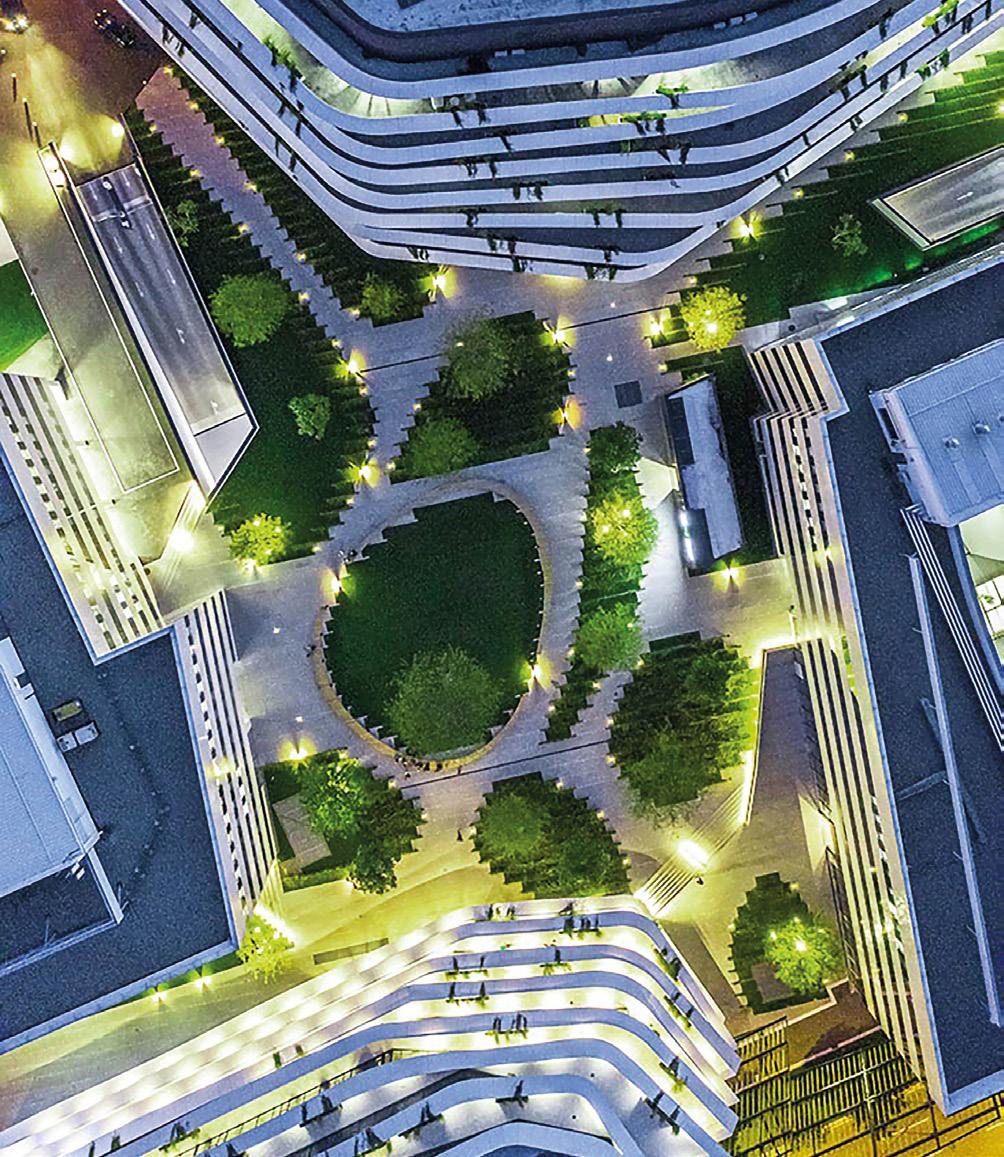
LUKAS WERFT,
Director and Partner, Werft Gardens and Landscapes
Each garden is first sketched on paper An example of a private garden
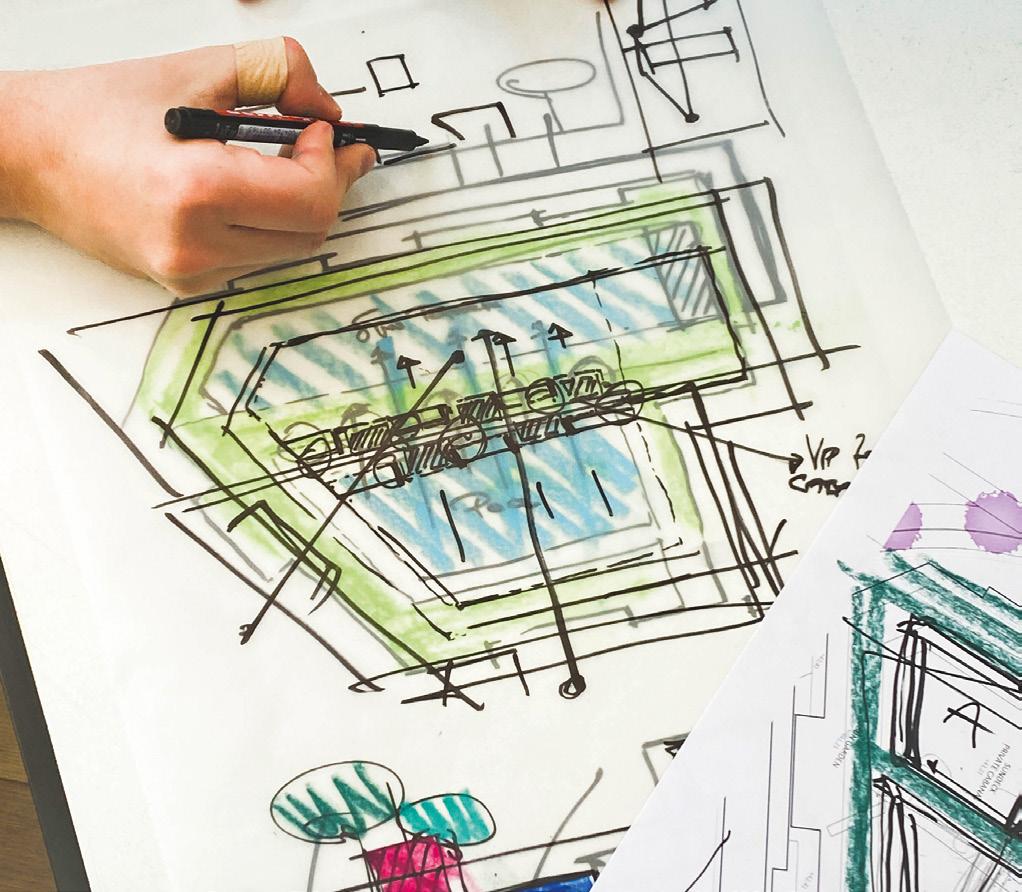
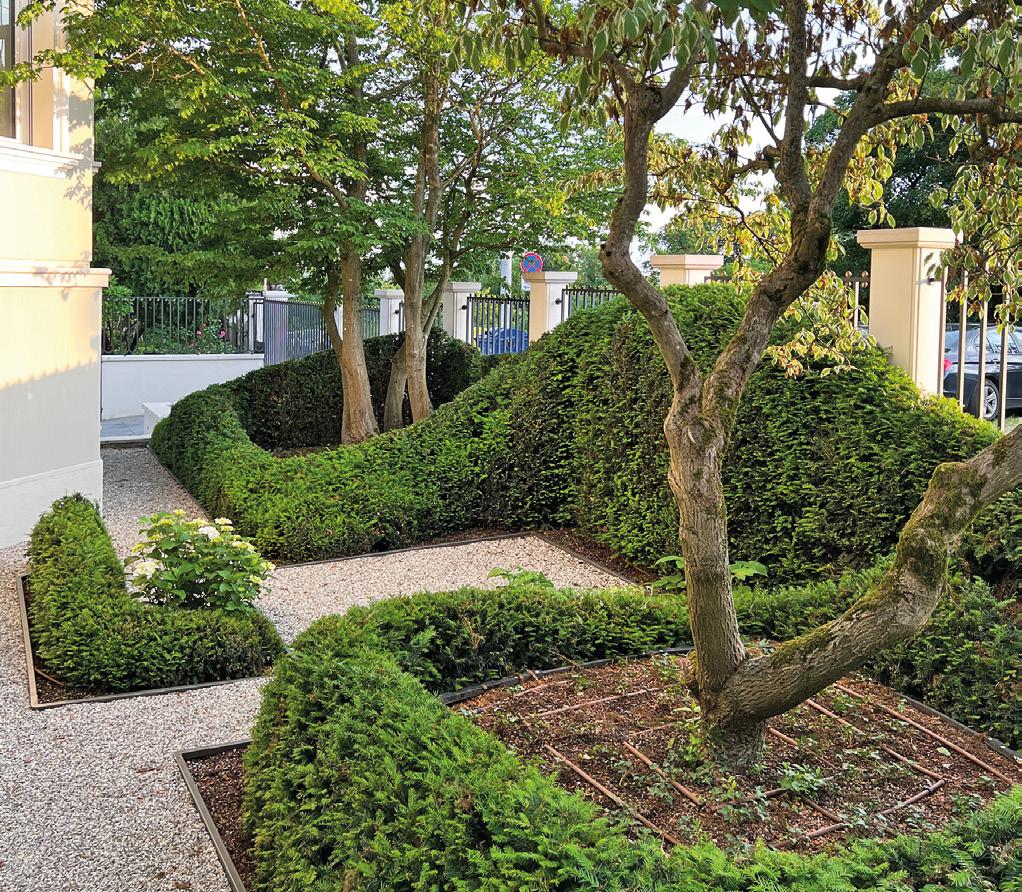
projects of investors who are building for the future and who can and want to afford it.
How much does the engagement of a landscape architect increase costs for the investor, and how much does it give in return?
— It would be very clumsy of me to answer this question, especially since all the projects are coordinated with the clients’ budgets. However, the contribution and importance of our work are spoken by the clients, who, despite all the architecture, facades, lighting, electrical, and mechanical solutions, put landscaping in the foreground.
You come to Belgrade often. Do you notice changes in the city, and what do you think of them?
— On average, I come here quarterly, and I am fascinated and shocked at the same time by the rapid development of the city. Fascinated because I see a superb approach to architecture and high quality, and astounded because work is being done in Belgrade, as well as throughout the region, without any plan, program, strategy... Nature has one advantage over us, and that is time. Nature has no problem repeating thousands or millions of times in order to meet the mutation that will eventually form order and balance in the whole. However, society needs order. For us as individuals, as well as society and life on the planet, time is limited. Without a clearly articulated vision and strategy that leads to some higher social goal, there is no progress—there is only wasted time.
You bring nature back into the urban space; you design private gardens... In your opinion, what should a modern, humane office look like?
— I have to be honest—I have no idea! It would be very general to say that the solution lies in the introduction of greenery
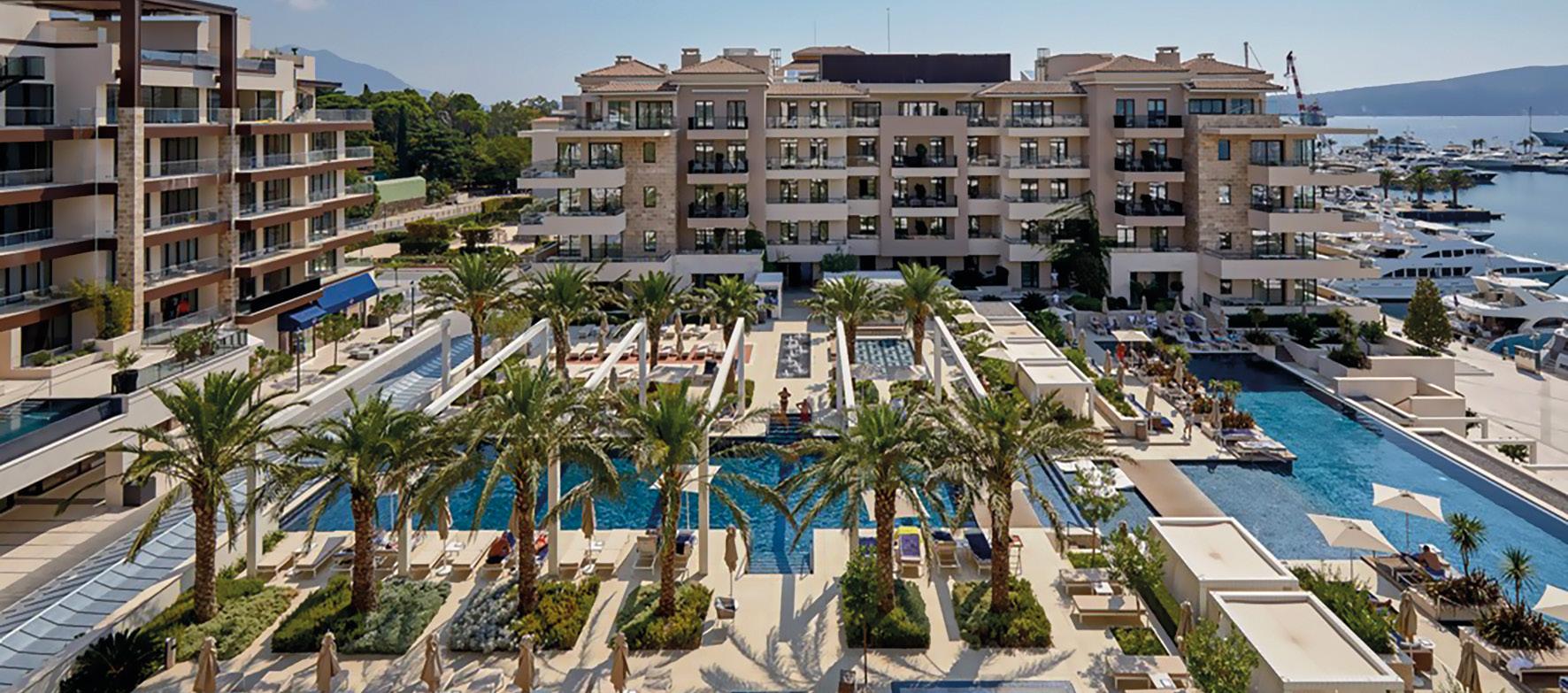
Scheherazade Villa in Dubrovnik

into the work space. However, does this really make such a fundamental difference? On the other hand, I can imagine a scenario where greenery makes a difference. But such a space would look more like a tropical forest than an office. Let me explain. Recently, I was a member of the jury for the selection of the best office in Croatia. Many people have brought plants into their workplaces, and those plants undoubtedly have an impact on the subjective feeling and spatial arrangement. However, I do not believe that this is the meaning of “green enlightenment.” In order to have a measurable and empirically valid effect, it is necessary to form the focal point of the architectural consideration of the space around the functional green areas (and volumes) that form the basis of the office (and functional) design. With that, I’m entering the realm of science fiction, and maybe it’s best to go back to the first sentence of the answer.
What are your plans for 2023?
— We already have a full agenda. We start with projects in Croatia and abroad. I am looking forward to the changes in the business itself, specifically the commercial part of it, where we deal with climate-friendly building materials for walking, train-automotive, and pedestrian surfaces. We will rebrand in order to broaden our commercial circle of activity in the region. We are also continuing with the reconstruction of our yard and garden area in Sisak. We are expanding the interior, almost doubling it from the current two hundred square meters, in order to ensure long-term space for employees, infrastructure, modeling, and virtual reality. We are finally converting the courtyard space into a showroom so that clients can see in person the ideas that have previously only been shown in photos. In the garden, we continue to develop “Oma’s laboratorium” (Granny’s laboratory) where we monitor different types of grasses, perennials, and herbs and record how they behave in our climate zone. We must come to grips with the increasingly common problem of data from the literature not matching the data from practice.
LANDSCAPING ALONG THE ENTIRE COAST OF THE ADRIATIC
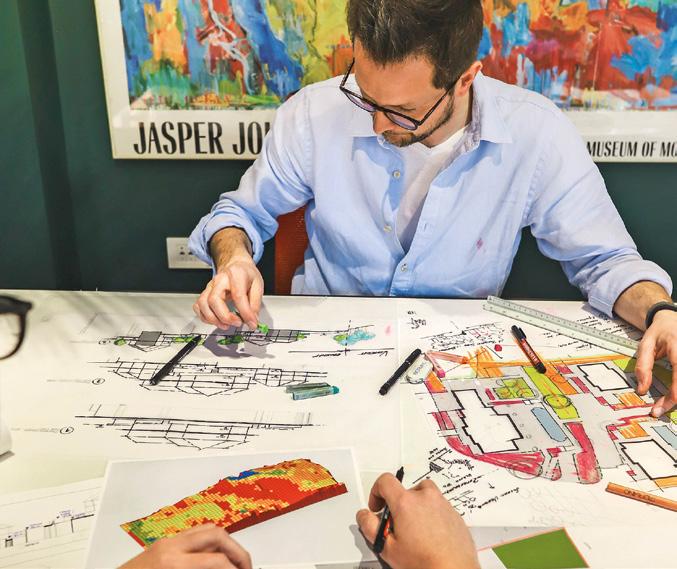
The family business, which initially dealt exclusively with landscaping around Sisak, was founded by Lukas’ father, Erich, in the mid-1980s, after returning from abroad. Over time, the company grew, and Lucas took over management after his father’s untimely death. Today, Werft Gardens & Landscapes is a multidisciplinary landscape architecture and design studio, specializing in the design of gardens and landscapes for luxury residential and hotel properties. The portfolio of Werft Gardens & Landscapes includes some of the most beautiful green solutions in this part of Europe: Marina Porto Montenegro in Tivat, GTC office complex Green Heart in New Belgrade, Rimac Campus near Zagreb... The studio was also involved in the project of the famous Boris Podreka’s Pical hotel complex in Poreč; they renovated the Rovinj Tobacco Factory (TDR) park; they worked on the Four Seasons resort in Hvar; they arranged the garden of the Šeherezada villa in Dubrovnik... Numerous private gardens and homesteads along the Adriatic coast, from Slovenia to the south of Montenegro, were arranged according to their designs.










